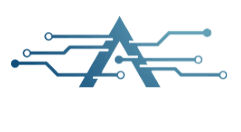Cloud databases are tricky. A lot rides on them. The leading performing player in this market space is database management software. The data protection technology provides essential defense solutions to various businesses and gives them access to cloud capabilities. Data protection within cloud infrastructure demands the same level of excitement as it does difficulty. Technology industries at large explore and prioritize matters related to securing cloud databases through ongoing debate.

Cloud database security demands care. It is not a walk in the park. The bank vault operates as an airborne terminal which remains elevated over all urban buildings. The protection standard remains the objective which companies must accomplish. A security strategy which is properly designed intercepts unauthorized access and prevents it effectively. Every step makes a difference. Every decision shapes the outcome.
Many view security as a patchwork effort. It should be more. A complete security methodology in organizations requires direct entry controls as well as fortified systems combined with cryptographic capabilities and active monitoring systems. A protective measure operated alone cannot establish complete security measures. The security elements operate individually within the security structure without depending on other elements. System-to-system security failures create multiple consecutive problems. Roads in security systems remain exposed because checks are not strong enough for hackers to attack through. Physical security must be strong enough to handle the chain defense system. Security of the chain depends on having all components remain absolutely stable.
Access control systems form the cornerstone of cloud security protection because they defend the assets of the system. Use multi-step verifications. Employ role-based access policies. Using a simple password offers insufficient protection because it is not enough to keep systems secure. The strength of access policies operates as digital security staff that control the entrance gate to a nightclub. Entry control systems function as preventive barriers to keep destabilizing individuals outside the area. Preventive security incidents can be stopped through periodic checks on user permissions systems. The internal vulnerability of organizations triggers destructive information system incidents occasionally. Such security issues become detectable through regular audits during their beginning phases. The system uses biometric detectors to identify small security breaches in order to prevent their escalation into extensive floods.
Modern technology displays encryption as a term which transcends its common usage. Every piece of stored data together with data in transit needs to complete encryption procedures. A readable text gets converted into an unbreakable code through encryption processes. Hacker attempts to detect communication result in absolute dead-ending activities. Use reliable algorithms. A data set makes itself impossible to read through if the key needed for decryption is absent. Teams should swap keys frequently. By following a schedule for key renewals organizations establish new security measures that protect their systems. The practice of digital security uses the same level of protection that homeowners receive when they change their property locks after a break-in.
Vigilance matters in software updates. System updates establish new basic security requirements which become mandatory for all systems. System outages from non-up-to-date use affect attackers positively. Old houses have unprotected windows when you observe them in this manner. Cloud providers release patches often. These updates plug critical vulnerabilities. All technical teams need to implement a clear system of scheduling. The security threats will stay active because system updates are ignored.
Backups are a lifeline. Emergency protection will be ensured when businesses make their backup data storage sit between distinct physical locations. The extent of data vulnerability becomes clear during ransomware attack occurrences. An offsite backup enables businesses to develop new prospects during emergencies since disasters strike. The recovery period shortens as organizations perform their backup operations at regular intervals. The backup files must be placed in safe storage locations separate from the primary operational system. The backup system needs to provide easy access at all times to retrieve the stored data. A complete recovery plan reduces the total damage caused by different incidents.
Logging and monitoring are vital. Every user activity within the system should be tracked including the performed tasks alongside their recorded times. Analyze logs routinely. Every system includes logs which serve as its built-in record-keeping functionality. The system displays clear warning notifications that precede total system threats. You can protect against significant security threats through the acquisition of analysis tools for tracking system logs. Security alerts in real time operate as digital smoke detectors within Information Technology systems. The system alerts users beforehand allowing them to prevent problems from evolving into complete system breakdown.
Entering multiple factors into access systems makes it harder for cyber attackers to penetrate your network. Systems remain at risk because passwords serve as the single security protocol. Multi-factor authentication layers up your access methods. Traditional safety containers can be unlocked only after completing fingerprint recognition and distinct knock signals as well as key entries. Security systems in operation today utilize this approach as their base method. Additional security procedures generate barriers that prevent attacks even if attackers manage to obtain password information. Select user and operation-friendly authentication methods. The technique enhances security by making the implementation stronger.
Cloud service providers implement several pre-built security safeguards which exist within their operational systems. Hybrid systems unite organizational programs with protection protocols of external third-party organizations. The system joins complete accessibility features with high-security mechanisms. Rely on trusted service providers. Review their security compliance certifications. These certifications provide extra confidence. Your organization derives advantages from working with approved cloud providers because they reduce pressure on internal staff groups. System weaknesses may be detected by external auditing organizations throughout their assessment process. Business organizations receive multiple advantages through shared safety models.
User education often gets overlooked. Major security difficulties will emerge from a solitary operational error made by employees. Every member of staff requires whole understanding regarding security processes. Scheduled training events help the organization achieve better security awareness among its staff members. Organization members require training matching the methods used to educate children about contact with people they do not know. Basic security measures that include workstation security and phishing email recognition produce substantial protective effects for the organization. Successful cautious behavior prevents numerous cyber security incidents from taking place.
Network segmentation functions by creating separate data storage units. Compartmentalization methods create data groups that minimize security breaches from spreading between them. Every section consisting part of a haunted house functions autonomously. Security system breaches create limited risks because a system-wide invasion does not occur automatically. Every section in the security setup maintains individual operational autonomy. Limit communication between segments. This security approach enacts additional obstacles for cybercriminals trying to execute extensive cyberattacks. The prevention strategy blocks a compromised system from spreading across all remaining operational parts.







